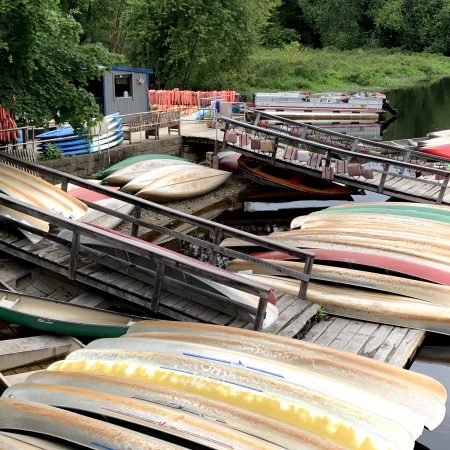

Rather than use the same patina green as the exterior, the architects decided to go with a warm, dirty penny patina, since copper located inside wouldn't patina the same way as the exterior copper. The copper panels wrap inside the building, where 148 hand-rubbed copper panels form a backdrop to the chapel.
#Patina green concord ma windows#
The 1,800 individual copper panels are 16 by 84 inches, which matches the proportions of the windows on the original church, creating synergy between the two buildings. Inc., Burr Ridge, Ill., custom-cut, bent and hand-rubbed approximately 14,160 square feet of 20-ounce flat lock copper panels.

"They were chosen based on a structure that had been set up for the project."Ĭraftsmen at Tuschall Engineering Co. "So once we decided that the new building should be copper, with that patinated color, it immediately took on an accessory role and allowed the original structural to be the main structure, while the new building, even though it kind of had to stand alone, was always going to be seen as an accessory to the main sanctuary."Īll of the material decisions were based on the story, Heiser explains, which removes the possibility of multiple options, creating clarity and a single option."Materials weren't chosen based on arbitrary likes and dislikes," he says. "And when we did that, we realized that the copper would be a great building material because it was truly an accent, or a foil, to the mainstay of the church. "We wanted to do something different, just like complementary colors, things that are opposite make each other stronger," says Vitale. The discovery of the church's copper detailing made it the material of choice for the new building, which the architects wanted to complement, not mimic, the original structure. "What was interesting was that we were looking at the same building, but at the same time we were seeing a completely different material," explains Vitale. Initially, the architects concentrated on all of the limestone details, but after seeing a photograph of the original church taken from the neighboring Hancock Tower, they re-focused their attention on all of the copper details, which included the roof, dormers, downspouts and gutters. Built in 1912, the original gothic church features one-of-a-kind craftsmanship and limestone detailing. Heiser and Vitale's initial design work developed a framework that the entre project could live under. " allows us to create a very cohesive story around the materiality and design, and it is one story as opposed to a story for the architecture and a story for the interiors," Heiser adds. By spending a lot of time with the stakeholders, Heiser says there were able to create a really strong point of view from which to embark on the project. To do that, Vitale and Todd Heiser, design principal, started out with a robust strategy that had them meeting with hundreds of user groups of all ages and levels of participation within the church to understand their needs. "Even though they had this very historic, cherished and well-loved building, they wanted a building that was going to look forward and would point toward the vitality of the next 100 years of the church," says Brian Vitale, design director. The architectural firm, Gensler, Chicago, was challenged to add onto a historic, 100-year-old church, while building something that described the church's desire of heading toward the future without disrespecting the past. It contains classrooms, a preschool facility, versatile chapel that can accommodate more than 350 people, gathering spaces, dining room and kitchen facilities. Cloaked in a weathered copper skin, the five-story, 82,000-square-foot center provides more space for the church's educational, outreach, music and fellowship programs including tutoring, day school, and the Academy for Faith and Life. Its simple elegance is what really struck the judges about the Genevieve and Wayne Gratz Center at Fourth Presbyterian Church in Chicago.


 0 kommentar(er)
0 kommentar(er)
